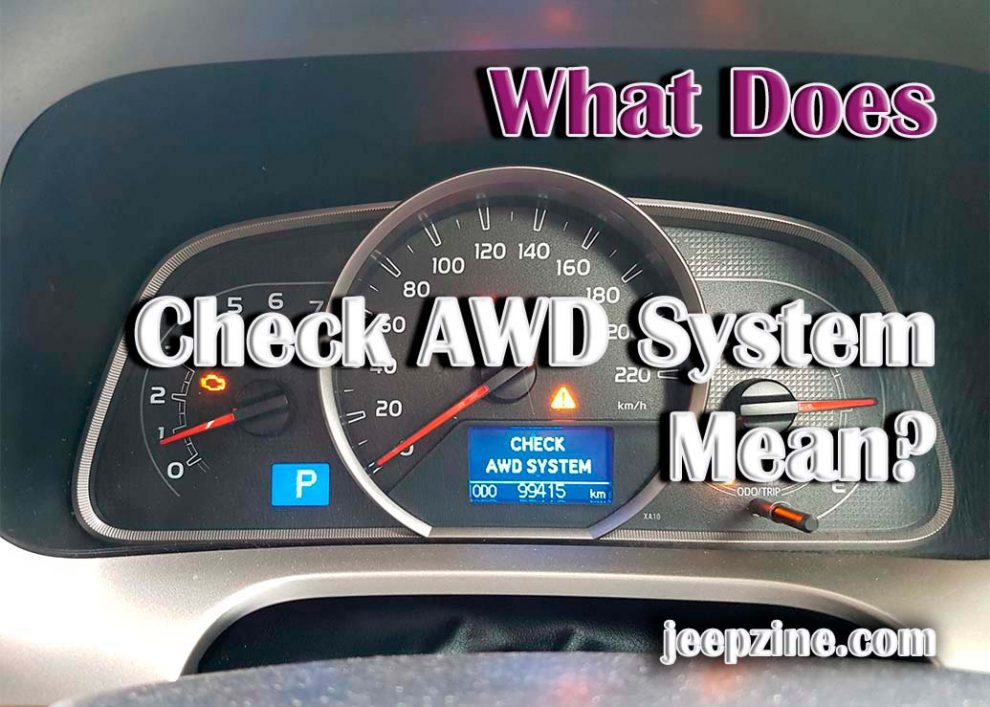All-wheel drive systems are essential to modern automobiles, providing improved driving performance and increased safety. However, when these systems malfunction, they can cause major problems. If the ‘Check AWD System’ warning message appears on your dashboard, it is essential to take the necessary steps to identify and address the issue to keep yourself and your passengers safe. In this article, we will discuss what this warning message means, how to identify it, potential causes of failure, and possible fixes for an AWD system.
What Is an AWD System?

Common Causes of AWD System Malfunction
Causes of AWD system malfunction can be due to a variety of factors. A few typical causes include worn-out components, such as the transfer case, driveshaft, differential, and axles. It is often caused by regular wear and tear or a lack of maintenance. Other causes may include damaged or contaminated fluids in the vehicle’s drivetrain system, electrical malfunctions or failing sensors, or mechanical damage to any parts in the AWD system. Additionally, wheel alignment issues can also cause an AWD system to malfunction. In some cases, loose connections in the wiring harness can also lead to problems with an all-wheel drive system and its associated components. It is important to perform regular maintenance on their all-wheel drive vehicles to avoid these issues and keep their car running smoothly for years. Also read about Best Wheel Spacers for Jeep.
How to Check an AWD System?
To ensure your AWD system is functioning correctly, the vehicle must be on a level surface, and the tires should be inflated to their recommended pressure levels. Next, start the car, press the accelerator, and release the brakes simultaneously. If all four wheels move simultaneously, this system has no issues. If only some of them move or none, this could indicate a problem with your AWD system. Then, visually inspect the system for any broken or loose parts. If any parts appear damaged or malfunctioning, they should be replaced immediately. Additionally, it is important to check all fluid levels and ensure they are at the correct levels for optimal performance. Checking all the sensors and wiring harness connections can also help diagnose any potential issues with an all-wheel drive system. If these visual inspections do not reveal any problems, taking the vehicle to a qualified service center or mechanic may be necessary for further diagnosis and repair.
Possible Fixes for an AWD System
Depending on the cause of the malfunction, there are a few possible fixes for an AWD system. First and foremost, all worn-out components should be replaced. If contaminants are present in the system, they should be flushed out and new fluids put in place. Any electrical malfunctions or broken sensors should be repaired or replaced as needed. If wheel alignment is causing issues with the AWD system, then a professional alignment should be done to ensure that all four wheels are properly aligned. Lastly, if loose connections are found in the wiring harness, these areas must be secured to ensure that they cause no further damage.
Conclusion
The “Check AWD System” warning message is important to take seriously when it appears on your dashboard. To avoid potential damage and dangerous driving conditions, it is important to identify the cause of this issue and take the necessary steps to fix it. It may involve replacing worn-out components and/or flushing out contaminants, repairing electrical malfunctions or loose connections in the wiring harness, or getting a professional wheel alignment for your vehicle. Regardless of the cause of the problem, acting quickly is key for ensuring that your all-wheel-drive system and vehicle remain safe and reliable for years to come.

